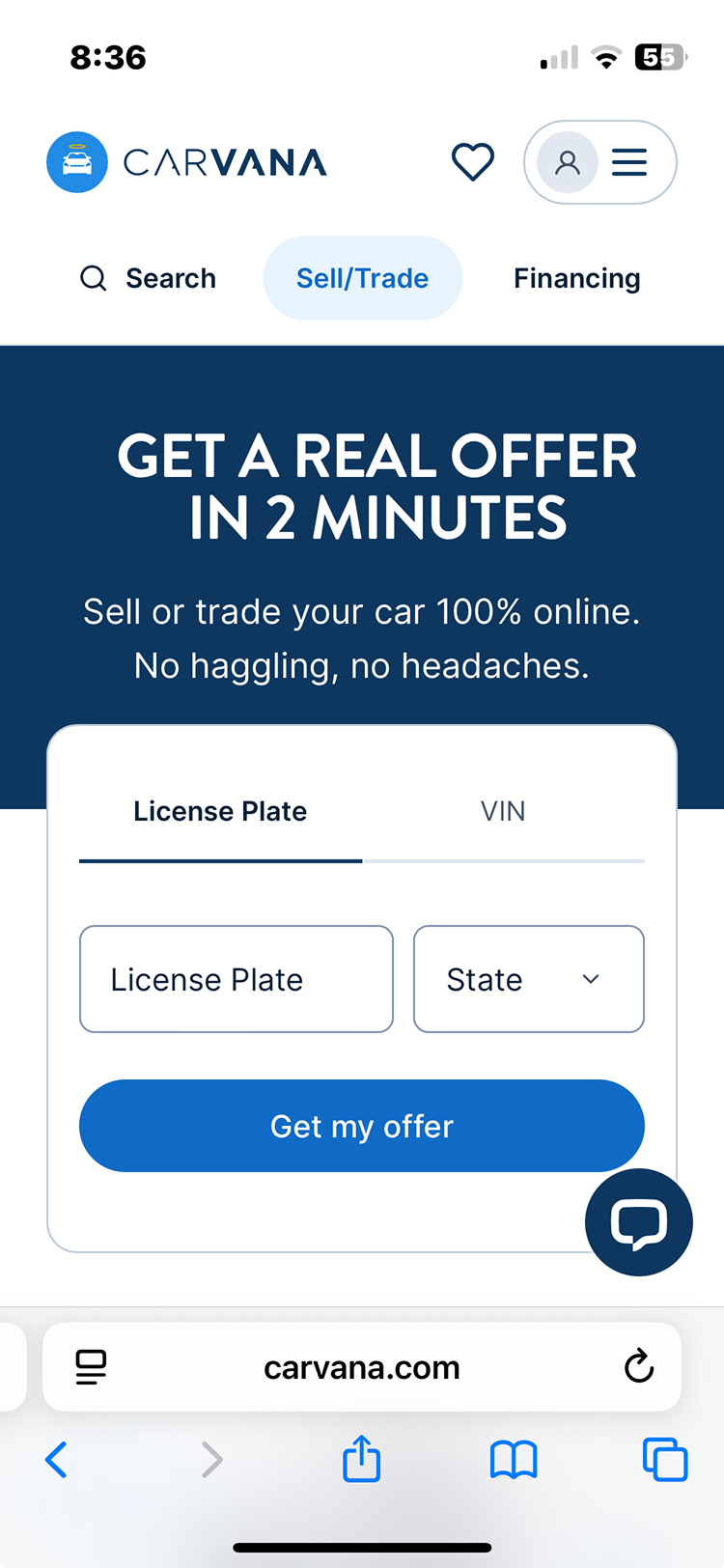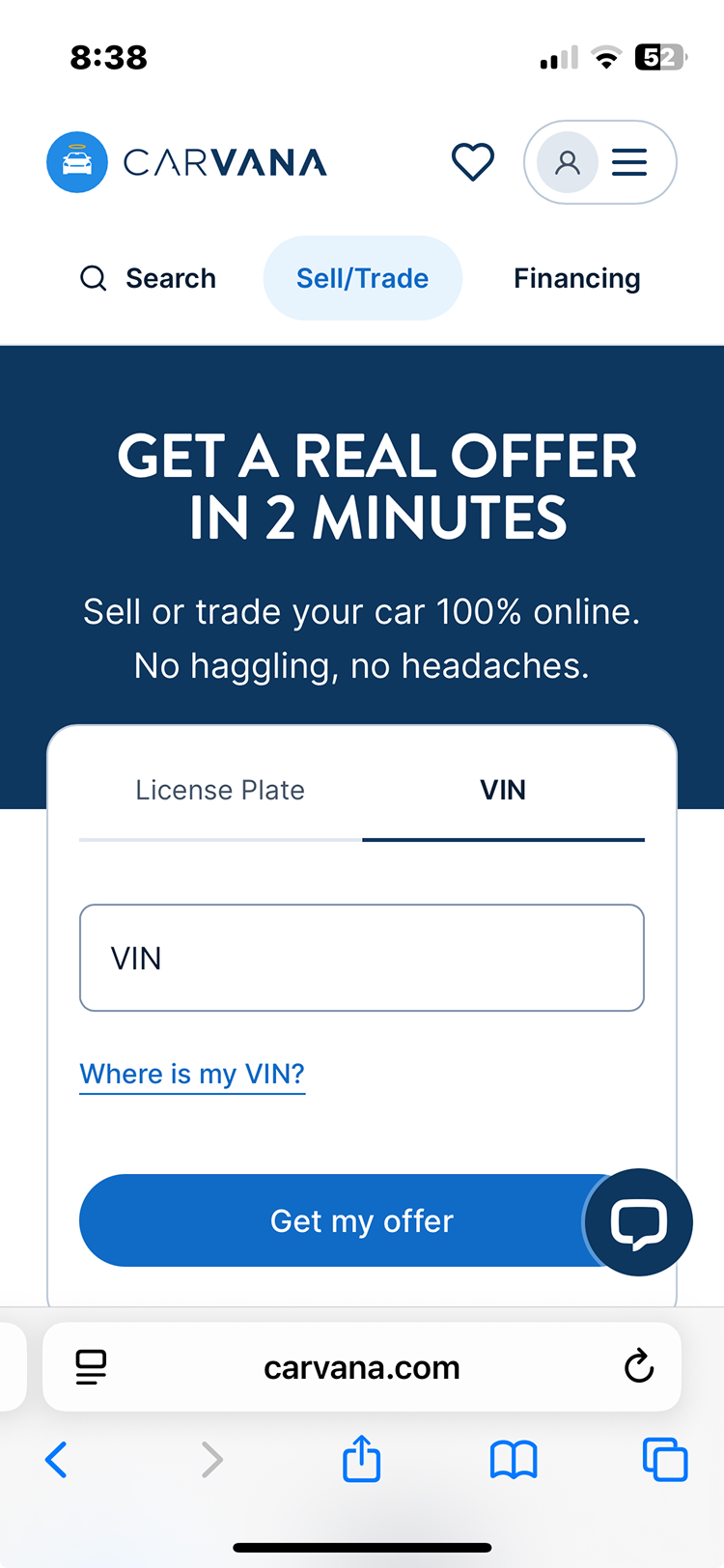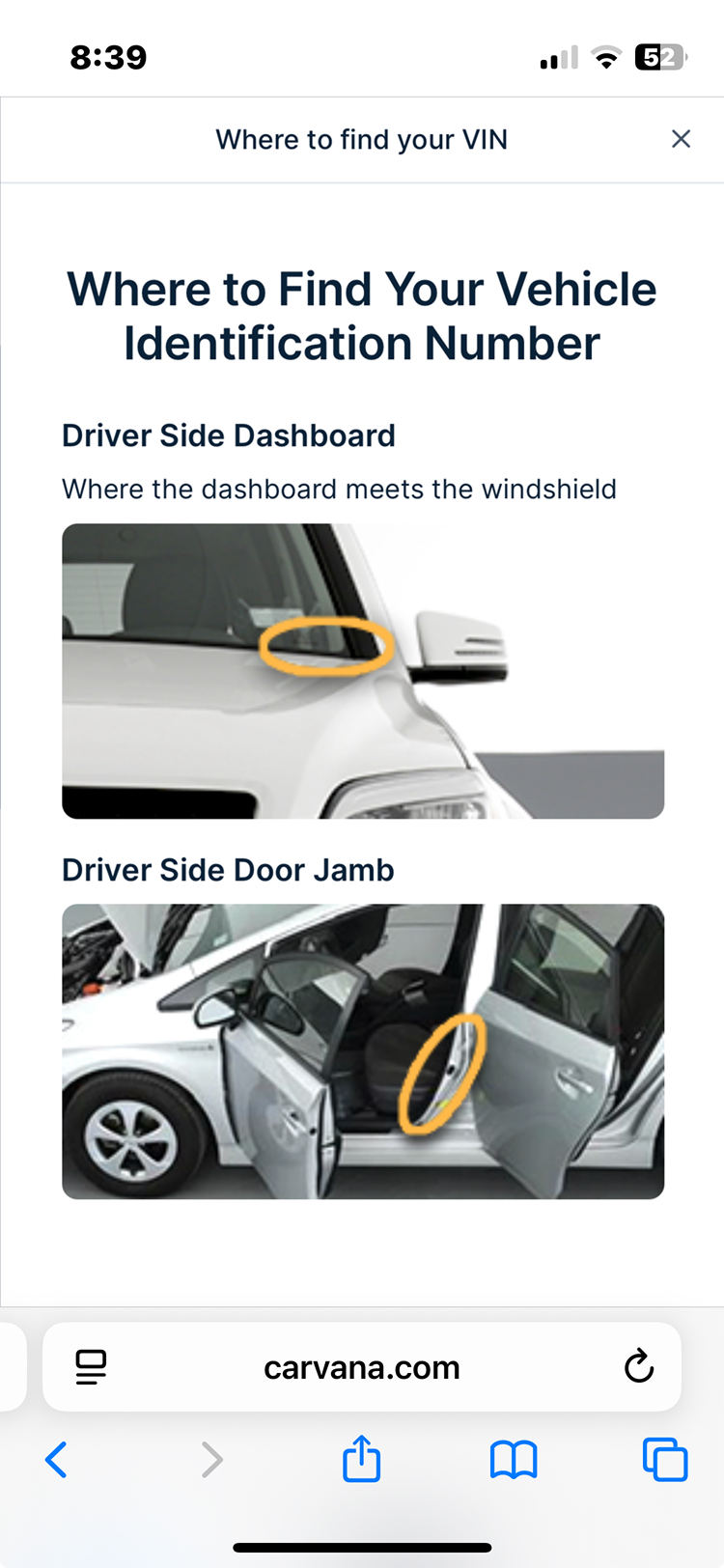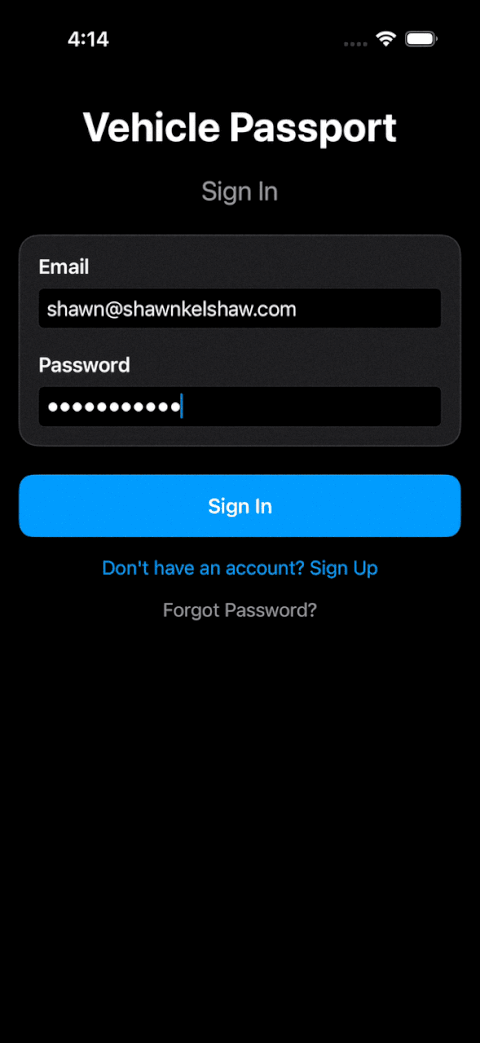User needs & business objectives
Process Deep Dive | Vehicle Passport | Stage 1
Meet Nick and Alan
A friend of mine, Nick, is a bit of a car enthusiast. Over just three years, I watched him trade in and purchase three different vehicles—all initiated online. Each time, he ran into the same pain points: friction and frustration, all tied to the trade-in aspect of the transaction. His frustration sparked the investigation below.
Related material

Nick Patterson
Archetype – Car Buyer (with Trade-in)

Alan Subran
Archetype – Dealer Agent
Pain points
Most online trade-in processes today rely on long, multi-step forms that ask users to recall vehicle details not top-of-mind. As a result, users may guess or spend extra effort gathering information, leading to inaccurate valuations and unnecessary friction that heightens frustration.
Related material
Current-state analysis
Next, I spent a few hours analyzing Carvana’s online purchase funnel, including the trade-in flow. Using Jesse James Garrett’s Visual Vocabulary best practices for flow diagramming, I mapped and visualized the complex conditional logic underlying Carvana’s online digital experience.
Between…
5-10
screens
…are presented in order to satisfy Carvana’s trade-in funnel experience
Between…
25-35
unique topics and questions
…must be addressed in order to satisfy Carvana’s multi-step trade-in questionnaire form
Between…
~3-8
minutes
…are consumed in order to satisfy Carvana’s multi-step trade-in questionnaire form
Funnel Entry (License Plate)
⭣

Funnel Entry (VIN)
⭣

Information Hunt
⭣

Business numbers
Business is inseparable from risk. Anticipating customer needs and investing in solutions is often uncertain and high-stakes. As a Product Designer, I see it as essential to understand those risks, empathize with the business context, and design structured solutions that reduce exposure while maximizing results.
Risk and user adoption
Mitigating risk to user adoption
Overall volume
So I asked the questions: “What’s up with vehicle trade-ins, anyway? What sort of numbers are we dealing with here on a national scale?”1
2016
~16
million
…new and used cars sold through trade-in deals
2024
~15-18
million
…new and used cars sold through trade-in deals
Empathy and early stage research
Primary and secondary research painted an interesting picture of buyer perception regarding trade-in.23
When asked…
12%
stated
…trade-in activities were top frustration with purchase process
Around…
$1,500
dollars
…per transaction could be saved by not having physical dealerships
Only…
10%
stated
…they completed trade-in valuation activities online
Only…
:26
seconds
…was saved completing trade-in valuation activities online
UX challenge
Market and user research exposes today’s vehicle purchase challenges. Trying to purchase a vehicle online today is often burdened and intertwined with vehicle trade-in valuation distractions. People are often unable to recall many important trade-in valuation data points (like vehicle trim and associated extras) causing them to guess their way through the digital experience. These burdens make online trade-in valuations inaccurate and a frustrating distraction that interrupts the user’s primary goal – buying their next vehicle.
Fascilitating collabortive, Design Thinking workshops
Click here to learn more about Ideo Labs, cross-functional, collaborative workshops.
Future-state experience outcomes
Nick – Vehicle Owner / Buyer (with Trade-in)
Improving Nick’s life might sound something like this…
Alan – Dealer Agent
Improving Alan’s life might sound something like this…
How might we statements
How might we exploit emerging technologies to turn smart vehicles into active agents along the buy, sell and trade-in transaction funnels?
How might we personalize buy, sell and trade-in funnel experiences overall that engage human beings in new ways?
How might we do a better job of disconnecting the vehicle trade-in funnel from the vehicle purchase funnel; reducing the friction users find when both funnels are combined?
Strategic intent
Untangle the dependency between buying and trade-in to reduce funnel abandonment
Use AI/automation to create parallel, optimized experiences for both flows
Personalize interactions based on intent signals (e.g., is the user buying first or offloading a vehicle?)
Solution hypothesis
Achieving a richer, more personalized car buying experience would likely mean leveraging emerging technologies to collect, collate, interrogate, integrate, track and broadcast every detail of a vehicle’s attributes and activities (static and dynamic) from cradle-to-grave.
Clickable prototype
I vibe-coded a potential high-fidelity clickable native iOS MVP prototype that could be used for internal alignment and proof-of-concept validation.
Nick buys a new car from Alan.
Alan provides Nick with a vehicle passport via QR code. Nick now has all of the vehicle’s static and dynamic data points in an easy-to-use standardized digital certificate.
Nick drives the car for 2 years. During this time, the car is serviced. As time passes, Nick forgets the extras, trim and minor details about the car’s service history and profile. But that’s ok, because Nick’s Vehicle Passport keeps up with it all.
After 2 years, Nick is now interested in getting into a new car. He uses the Market feature of the Vehicle Passport app to identify the best time to trade up and schedules an appointment with Alan. His Vehicle Passport automatically generates an accurrate valuation and sends the recommendation to Alan with the in-person appointment request. Trade in handled. Nick and Alan can focus on the purchase effort.

Business objectives and strategic themes
Based on the available market analysis and the user research recommendations, we have determined one of this year’s strategic themes is to Decouple and Optimize to Convert. Delivering on this strategic theme will likely address the friction caused by intertwined purchase and trade-in flows, and will likely support a disruptive shift toward simplified, faster, and more personalized trade and buy funnel experiences. This strategy is likely to reduce cognitive load, speed up decision-making, and improve customer confidence. The proposed UX vision is consistent with the organization’s Mission, Vision and Values and hereby adopted.
The Scientific Method
The word ‘likely‘ is used significantly within this section — it’s not by mistake. Click here to watch this brief video on the Scientific Method by Dr. Richard Feynman (Nobel).
Guiding principles
The business is prepared to fund and support concrete design solutions that adhere to and represent the following guiding principles:
Meet customers where they are
Our customers are constantly moving from device to device and from channel to channel. And they have very different needs along their journeys. With so many moving parts, the only way to deliver highly relevant interactions is to bring together everything we know about them: how they like to communicate, where they like to shop, and what interests they have. Meet them where they are and they’ll have no reason to go anywhere else.
Shorten path to value
The quickest path to business value starts with knowing what our customers want to accomplish, and then helping them get there. After all, when we our help customers reach their own goals — they’re much more likely to take actions that help us reach ours.
Let AI sweat the small stuff
Artificial intelligence and machine learning should be implemented sensibly. Exploit the available time, money and resources to reimagine the experience exploiting these technologies where they make sense to do so. Use emerging technologies where they demonstrate stability and true value-add potential aimed at engaging every customer on a deeply personal level.
Key Performance Indicators
KPI 1:
Decrease
by 5%
Buyer Frustration
…that users have expressed experiencing with trade-in
KPI 2:
Increase
by 10%
Online Purchase
Transactions
…which is the primary objective for both users and business
KPI 3:
Decrease
by 30%
Time-on-Task
…users want to spend time driving a new vehicle… not purchasing one. Let’s focus on getting them into their next vehicle instead of the steps that go into procuring one
- Cox Automotive, 2019. 2019 Car Buyer Journey Study. [pdf] Cox Automotive. Available at: https://www.coxautoinc.com/wp-content/uploads/2019-Car-Buyer-Journey-Study-FINAL-6-11-19.pdf [Accessed 2 July 2025]. ↩︎
- Carvana Carvana Careers: Between Two Erns [Online Video]. YouTube. Available at: https://www.youtube.com/watch?v=sp5YOPlSBuA. ↩︎
- Cox Automotive, 2019. 2019 Cox Automotive Car Buyer Journey Study – Media Deck. [pdf] Cox Automotive. Available at: https://www.coxautoinc.com/wp-content/uploads/2019-Cox-Automotive-Car-Buyer-Journey-Study-Media-Deck.pdf [Accessed 2 July 2025]. ↩︎

